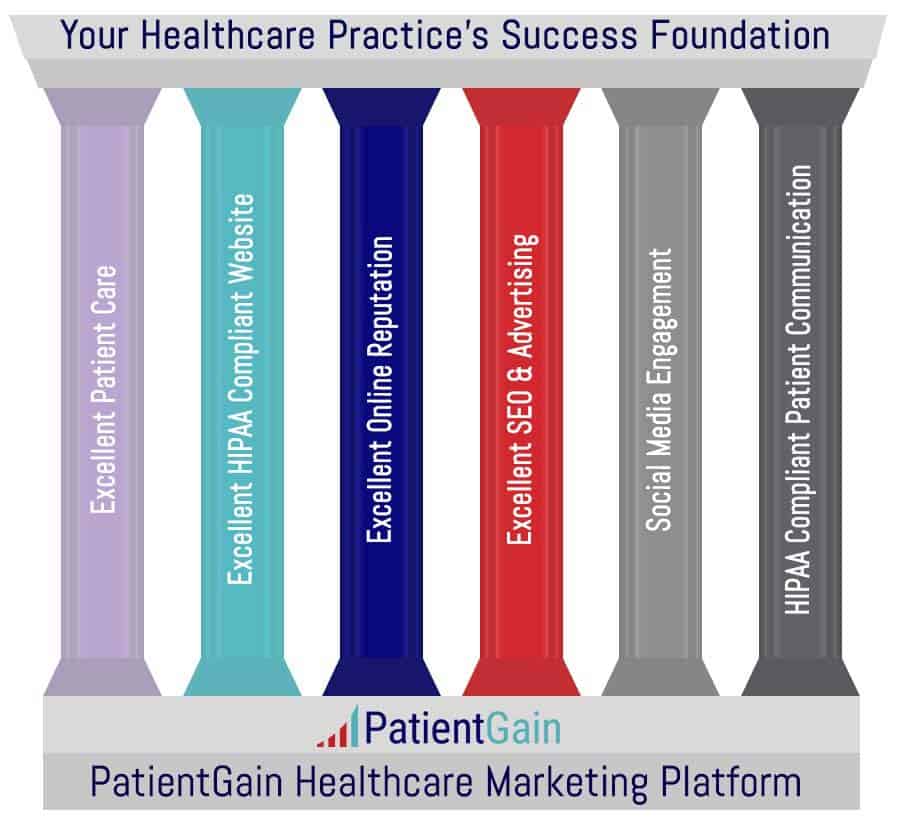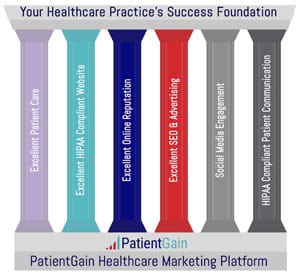Pre Launch Medical Marketing Checklist for Doctors
8 Specific Areas for a Profitable Medical Practice. Before You Spend a Single Dollar – Check This.
To properly market your medical practice, you need more than just a healthcare business or medical facility. As amazing as your medical marketing campaign may be, if you do not have things in order at your location, it is a waste of time. Some owners make the mistake of concentrating too much on their marketing plan. They miss some significant areas that are needed for a successful business. Before you spend a single dollar on promoting your business, make sure you are satisfied with these eight areas of your medical practice.


No 1. Staffing Your Medical Practice With Qualified People
No medical practice is a one-person operation. A vital task that must be accomplished is hiring the right doctor or doctors to staff your medical practice. You will want someone who is experienced, qualified, and is educated in the areas your target audience needs the assistance within the community. For example, if you are opening a pediatric medical practice, you wouldn’t want to hire someone who specializes in senior citizen memory care. Besides the doctor, you need staff to assist that person. These people include nurses, medical assistances, front desk medical receptionists, and even lab and x-ray specialists. These staff members cannot be hired off the street, and many require certifications to operate medical equipment or to assist the doctor. Review the resumes of anyone who applies to make sure they are a good, qualified fit for the job. When you have assembled your staff, dedicate a webpage to them, showing your community the skilled talent you have at your medical practice.
No 2. Satisfy all of the legal requirements to operate your medical facility.
Opening any business these days requires you to meet specific legal requirements to operate legally. For a medical practice, there are often more regulations and applications to fill out for approval than in other industries. Consult a lawyer or your area’s medical association to see what specific rules must be met to open your healthcare business. These regulations often vary state to state and can even be a little different depending on the municipality you reside in. Make sure all T’s are crossed and all I’s are dotted before you open your doors. Paying a fines for zoning or other violations is not an excellent way to start your grand opening week.
No 3. Streamline your medical billing
Medical billing is the way your business is going to get paid unless you are operating an entire cash upfront business. (Which you are likely not unless you are the doctor for underground organized crime syndicate and that usually doesn’t end well in the movies.) Your staff will be dealing with patients and their co-pays, coinsurance, multi insurances, and also those who have no insurance at all. All of these aspects can be challenging to organize. Establish a transparent process for your staff to:
• Recording insurance information accurately
• Collecting co-pays and coinsurance
• Make claims with insurance companies
• Follow up on any claims that have not been paid
• How to collect money when claims have been denied
• How to refund money to patients when insurance covers more than what was expected.
Many times, medical billing will have mistakes. Train your staff to recognize these mistakes quickly so you can get paid quicker. It also avoids uncomfortable situations where you have to ask for more money from a patient because there was a billing mistake on your end.
No 4. Make your facility up to code.
Home is where the heart is, but your medical practice’s home is in a building that must be kept up to code. Regardless if a facility is built new for you or you are buying/leasing a building for your business, it must meet specific codes to operate legally.
There are likely additional codes that must be met since you are operating a medical practice with potentially hazardous materials or equipment on the property. Building codes have some uniformity throughout a state, but again, each municipalities may have their adjustments to reflect their community. These differences are often related to what kind of signage you are allowed to put up when lights have to turn off, and sometimes the number of parking spaces you need. On a national level, your facility generally must be ADA compliant, allowing those with disabilities to able to access it. A final consideration: If you are leasing a spot inside a strip mall or business park, there may be additional rules you must follow, or you risk breaking your lease.
No 5. Filling your medical practice with the right equipment
As mentioned above, your medical practice is not a one-man show. It also isn’t a “one doctor’s bag” operation either. Your medical practice must have the right equipment on hand for you to conduct business. Some doctors outsource all of their needs to third parties. They may send their testing needs to a lab vendor, patients who need x-rays to a local urgent care center, or refer patients to specialists if they need more than a check-up. While this is certainly a route you can take, in today’s competitive landscape, the more a patient can do in a single visit, the better. So, having an onsite lab for simple tests, an x-ray to look for broken bones, and some specialists in the building only benefits you and makes the patient’s experience better. The more equipment you have at a medical practice, the more services you can offer. The more services you can offer, the more things you can market to a community when you argue that your facility is the best choice for their care. You are limited by the space you have, as you are not a huge hospital. Try to pick the equipment that best matches the services your community needs the most.
No 6. Maintaining HIPAA Compliance
If you fail to maintain HIPAA compliance, you will be shut down as a medical practice. HIPAA regulations are severe, and you should ensure everyone on your staff follows their guidelines. It is in your interest to test your employees to ensure they understand the rules, so they don’t even accidentally violate any guidelines. HIPAA is not something you can slide around, and it will sink you if you play too fast and loose with it.
No 7. Funding Your Business and Managing Finances
More than likely, you will need to take out some sort of business loan to finance the start of your medical practice. Another route that some take is getting together several people to invest in your business and work together as a corporation. The latter can be helpful as you can bring in people who will not only fund you but also lend you their expertise. It can also be a burden if disagreements arise, and someone wants to leave the association. Your finances must be managed carefully. It is more than just depositing checks and paying utilities. Your business will be paying staff, collecting taxes, submitting federal, state, and local tax payments, and then sending out appropriate tax forms to your team. Instead of keep track of your money with a paper ledger, use a specialized accounting program, and a tax accountant at the end of the year to draw up the taxes for your business. You may be deeply aware of the in’s and out’s of a medical field, but you may not be aware of various tax breaks or programs that are available to you.
No. 8. Acquiring Patients A.K.A Medical Marketing
Once you have all of your ducks in the order above, it is time to start acquiring patients. Create a medical marketing plan for engaging your target audience in the community. This marketing plan can include traditional offline methods (like direct mail, billboards, and print ads) and also online digital techniques (like social media marketing, search ads, and content marketing). It is best to take a multi-prong approach to acquire patients. No one method on its own is likely going to give you the patient count you need to sustain or grow your business. The key, however, is to have a plan and not just shoot from the hip and see what works. Track the progress of your campaigns, and make adjustments as needed after giving it some time to get traction.
Put time and effort into these areas when you start to run a medical practice, and you’ll have a higher chance of being successful. Don’t ignore any aspect mentioned above as it will likely come back to ding you in the long run. It is best to address problems before you begin an intense marketing campaign, rather than try to solve them while running your business and managing changes to your campaign. Contact PatientGain to help you with new patient acquisition.
